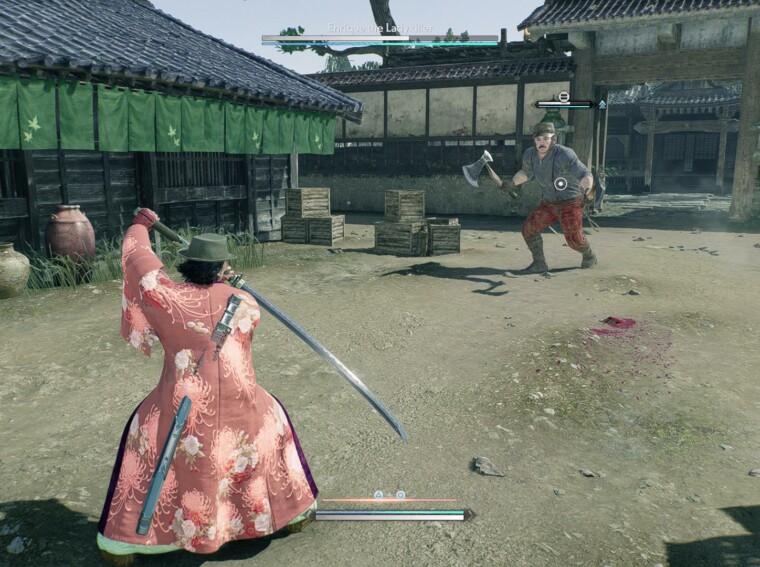Team Ninja, renowned for its high-octane combat mechanics in Ninja Gaiden, Nioh, and Wo Long, ventures into the open-world genre with Rise of the Ronin ($69.99) for PlayStation 5. This action-RPG boasts expansive exploration, historical drama, and accessible combat. However, it struggles to distinguish itself within its genre, making it an ideal starting point for newcomers to Team Ninja’s work but potentially disappointing for fans seeking deep battle mechanics.
Set in the tumultuous Bakumatsu period, Rise of the Ronin departs from Team Ninja’s typical fare by focusing on history and narrative. While recent titles like Nioh and Wo Long incorporated historical elements, Rise of the Ronin offers a less fantastical approach reminiscent of early Assassin’s Creed games. The story follows assassin siblings navigating the decline of Japan’s Tokugawa Shogunate, grappling with identity amidst Western influence.
Despite its historical depth, Rise of the Ronin’s presentation lacks the usual spectacle Team Ninja is known for. Unlike Nioh and Wo Long, which dazzle with supernatural elements, Rise of the Ronin’s grounded focus on history and drama fails to captivate.
As you progress, you shape the story’s outcomes through interactions with NPCs using a dialogue tree system, offering varied perspectives on the era’s politics and figures—an area where Rise of the Ronin excels.
Upon entering the open world, players explore regions featuring landmarks, fast travel points, and settlements to liberate. However, combat encounters are surprisingly sparse compared to other titles, with a gameplay style reminiscent of the Far Cry series.
Team Ninja streamlines its combat approach in Rise of the Ronin, simplifying mechanics seen in Nioh and Wo Long. Combos are executed with a single button press, utilizing stamina (Ki) similar to previous titles. While challenging, combat lacks the depth seen in earlier games, primarily focusing on mastering new weapon move sets.
Overall, Rise of the Ronin offers an accessible historical RPG experience but falls short in distinguishing itself within its genre, making it a suitable entry point for newcomers to Team Ninja’s games.
Similar to Nioh, Rise of the Ronin allows you to switch stances to unleash different weapon moves, representing distinct fighting styles with the ability to equip up to three at a time. However, unlike Nioh, Ronin introduces a rock-paper-scissors system to enhance their utility. While promising in theory, this approach feels restrictive in practice. Players tend to stick with preferred stances until encountering enemies that necessitate a change for effectiveness. In previous Team Ninja games, mastering stances extended combos or bolstered defense, offering strategic depth that could overpower adversaries with skill. Rise of the Ronin’s combat opts for a more casual interpretation of this concept.
Performance-wise, as a PlayStation 5 title, Rise of the Ronin offers several modes: Graphics, Performance, and Ray Tracing. Unfortunately, testing revealed shortcomings in all three modes.
The Performance mode targets 60 frames per second but often falls short, averaging closer to 40fps or 50fps.
Graphics mode prioritizes resolution and visual fidelity but suffers from inconsistent frame rates. Locking the frame rate at 30fps for smoother performance still results in occasional drops. The visual enhancements are noticeable but come at the expense of stability.
Ray Tracing mode sacrifices resolution to incorporate ray tracing into the enhanced graphics. While visually appealing, this mode exhibits the most erratic frame rates, even when capped at 30fps.
While Team Ninja’s games are typically visually appealing for their time, Rise of the Ronin faces stiff competition from visually striking titles like Ghost of Tsushima. While not unattractive, Rise of the Ronin lacks the breathtaking open-world vistas of Ghost of Tsushima or the impressive facial expressions seen in Like a Dragon: Ishin!.
In summary, Team Ninja’s first foray into the open-world genre with Rise of the Ronin offers a mostly successful historical fantasy experience. The game features dynamic action and diverse content, albeit sparse in some areas. The streamlined combat system, while accessible, may disappoint hardcore combat enthusiasts accustomed to Team Ninja’s previous titles. Nonetheless, Rise of the Ronin provides an enjoyable experience for those seeking straightforward samurai action and exploration. For those craving deeper mechanics, Nioh or Wo Long might be more suitable choices. While Rise of the Ronin offers an inviting and simplified approach to Team Ninja’s signature action, fans of complex combat mechanics may find it somewhat underwhelming.

